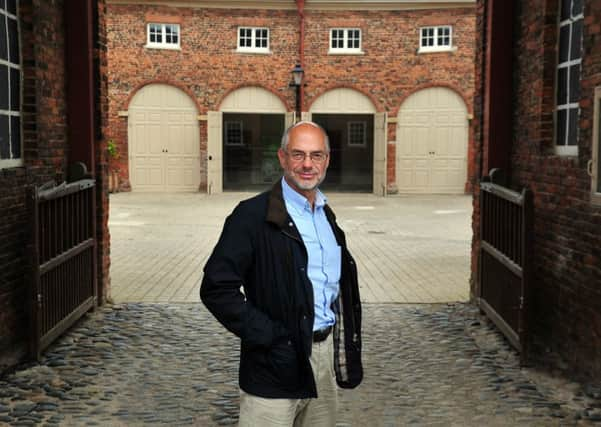A palatial pad where the horses lived like aristocrats


Built around 1770, no expense or effort was spared on the vast stable block at Burton Constable Hall, where horses lived in palatial comfort, their needs attended to by an army of servants.
But in the last few decades the magnificent building, with its innumerable stables, tack rooms and grooms’ quarters, fell into dereliction – with some walls and ceilings deliberately removed.
Advertisement
Hide AdAdvertisement
Hide AdNow a £417,000 Heritage Lottery project has restored some of the building to its mid-19th Century heyday.
The stable block was built to the designs of the architect Timothy Lightoler on the orders of William Constable, the most notable figure in the house’s history, who was responsible for modernising the buildings, landscaping the park and bringing together the art collection, with its copies of well-known Old Masters. He told his stepmother, Elizabeth, “you know my extravagant turn and I am making great and expensive alterations about my house and park.”
It was no understatement: two blocks built in Palladian style inspired by the architecture of ancient Greece and Rome with imposing entrances, large quadrangles, and an inside riding school, added later.
From an upstairs sitting room, celebrated master of the hunt, Sir Chichester-Constable could watch his hunters together with his huntsman, while toasting their legs in front of a fire.
Advertisement
Hide AdAdvertisement
Hide AdClass divided horses like people – the north block closest to the hall was where the gentry’s horses, the hunters were stabled; the less grand southern block was for carthorses and “old hacks.”
Much of the Lottery grant has been spent on repairing and restoring plaster and lathe walls, windows and ceilings. Techniques from the mid 18th century used to make things look grander, including graining to make pine look like oak, have again been used, to great effect.
It still has the lived-in look – the stable walls are scuffed and pitted and on a behind the scenes tour the curious can see the cavernous, unrestored stable lads’ quarters, with cobwebs hanging from the rafters, a ruined foldup bed, marked “Sir CC” standing on bare boards. There’s 19th century graffiti scrawled on a door and a missing window pane to let the resident barn owl fly in and out.
The project has also seen a light-filled exhibition space created in a carriage room, a successful fusion of old and new, facilities for volunteers, a new entrance for visitors - and a new backdrop for the famous skeleton of the Burton Constable whale, which inspired Moby Dick author Herman Melville.
Advertisement
Hide AdAdvertisement
Hide AdAs he shows more stables with the ceilings above ripped out and the floors littered with jackdaw nest detritus, Dr David Connell, of the Burton Constable Foundation, says he is delighted with what has been achieved – but says it is just a fraction of what could be done. He said: “Burton Constable is a money pit – millions have been poured into it in the last 20 years. We could have easily spent another million on this.”